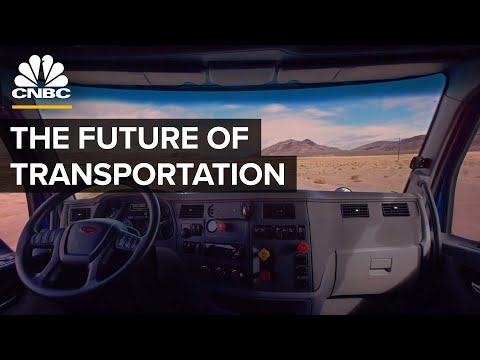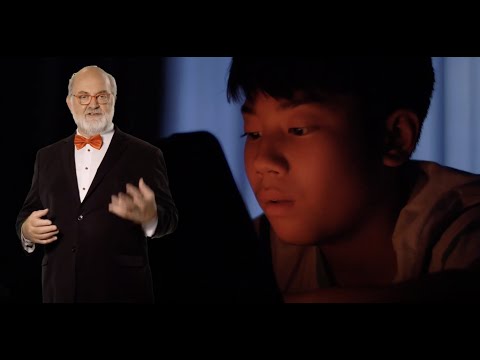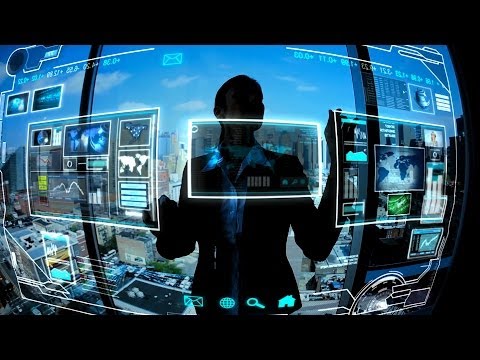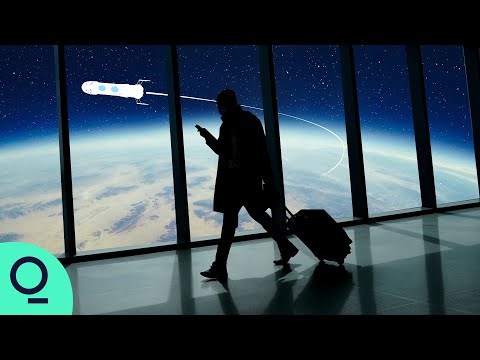This list relates to activities associated with a typical future day in the life of most ordinary people, as they are expected to live it, according to the predictions of futurists, who know (or think they know) what the future holds. This includes what our houses will look like, how we will travel, the instruction schools will provide, how childcare will work, how we will take care of our pets, what our workplaces will be like, where and what (not whom) we will worship, how we will garden, what will entertain us, and how and where we will vacation. So let’s look at ten predictions about our typical day in the future.
10 Housing
Smart technology will equip future homes with virtual assistants to perform secretarial duties, solar-sensitive awnings that open or close to adjust the sunlight in a room, chargers that automatically stop charging household appliances when fully charged, and robotic chefs that prepare meals by themselves or according to recipes they locate on the Internet. Watch this video on YouTube Houses will be built with 3D-printed materials according to programmed time and money restraints. Modular walls will allow residents to change the structure of their houses to suit their own changing needs, creating new spaces or redesigning those that already exist. Robotic furniture will rearrange itself to residents’ specifications. Smart sensors will track plants’ oxygen levels and water needs. Facades will be ventilated, insulation will reflect heat so that the outside temperature falls by 70%, and families will use blockchain technology to manage their own energy needs. Future houses will feature smart elevators, digital air conditioning, remote-controlled electric window blinds and curtains, and, of course, electric charging points in garages for residents’ electric cars. Houses will also be accessible for residents who require assistance and provide communal work and leisure spaces for residents young and old. Sustainability and efficiency will increase due to the Internet of Things’ combination with connected systems and smart facilities. In multi-story dwellings, the design will complement resource management, with lower levels basking in reflected light while upper floors receive natural light to facilitate interpersonal interaction. While some aspects seem like they are already here, there is still much to come in our homes.[1]
9 Transportation
As inviting as the homes of the future may be, we will want or need to visit other places on occasion. Fortunately, futurists also have mapped out our transportation needs, and the future of transportation looks amazing. Sustainability and communal ownership will guide the coming transformation of transportation. Besides self-driven electric cars, we will have electric streets as well, with overhead cables and induction coils embedded in the tarmac to energize vehicles in transit. The vehicles themselves will also be much different than the cars and trucks on the road today, as each will combine automotive, marine, and aerial capabilities, becoming, in effect, a car-boat-helicopter. Wider elevated trams will accommodate the need for more mass-transit traffic, as will buses that physically expand to hold the crush of rush-hour commuters and contract between peak traffic hours, when additional passenger space is no longer needed. Alternately, buses could be equipped with detached, self-powered, self-driven “pods” that could be added or removed as the numbers of passengers fluctuate. Detached, the pods could then become taxi cabs. Trains will reach astonishing speeds using existing magnetic levitation (maglev) technology or Elon Musk’s idea for underground partial vacuum tubes that whisk passengers to their destinations at speeds as great as 62 mph (100 kph).[2]
8 Education
Today, for couples with children, daily life involves getting the kids off to school. In days to come, futurist Thomas Frey suggests, the school may come to the students as a “standardized, rapid courseware-builder” available everywhere through a “single point global distribution system,” replacing classrooms in brick-and-mortar buildings. The participative courseware will allow any user anywhere to create customized educational courses. As a result, societal efficiency should increase by as much as 90 to 95%, as people are no longer limited by outmoded systems so built into the way we do things that we take them for granted, never considering how they might be improved or replaced by better approaches. As examples of such restrictive systems, Frey cites, among others, the incomprehensible U. S. income tax system, which is based on a 64,000-page code that slows commerce to a crawl, and the “half-implemented metric system” that needlessly complexifies measurements and such simple operations as filling “3.2-liter engines with quarts of oil.” Other countries are also hamstrung by outdated and inefficient systems. For example, both education and communication are restrained in China by its language’s tens of thousands of unnecessary, little-used characters. There are 47,035 characters in the Kangxi dictionary, but only 3,000 to 4,000 of them are needed for “full literacy.” The participative courseware envisioned by him and other futurists will expedite learning and efficiency by implementing several innovative methods. These include the easy design, building, and launching of hour-long courses and the availability of multiple teaching strategies supporting various learning styles. It will also involve a mastery approach to teaching based on testing outcomes from learning materials tailored to the cumulative needs and interests of students. By “tagging” courseware, students can indicate their ratings of it, comment on courses, and receive recommendations for additional courses based on their personal interests and the past courses they’ve taken. Tagging also allows political groups and others to “like” or “dislike” material, so revised course content meets their approval and lets experts set course prerequisites and post-requisites. Certification requirements, determined by experts, would ensure that learning standards and qualifications are met. At the same time, the emphasis would shift from grade-level instruction to achievement levels. Profits from using the courseware would be shared among producers, distributors, and others. To promote investments of time and money in global, participative courseware, Frey recommends a system of grants for its development, testing, and distribution. For learning that is better accomplished through undertaking a hands-on approach—Frey uses marine biology as an example—learning camps would be maintained that combine apprenticeship-type learning with the support of interpersonal interaction.[3]
7 Childcare
Childcare for those too young to enroll in public schools would be a snap if futurists’ vision of its potential is correct, and no one would ever need to worry about their older children becoming “latchkey kids.” Unfortunately, there’s just one problem with this optimistic scenario: a survey indicates that the majority of respondents to a European Commission survey indicated that they do not trust artificial intelligence-equipped robots to care for their little darlings. Sixty to 61% of those who completed the survey were against robotic childcare providers, indicating that they “should be banned from caring for children.” Watch this video on YouTube Despite such misgivings, Martin Ford and others operating on the cutting-edge of technology believe that it is inevitable that artificial intelligence (AI), combined with smart machines, algorithms, and robots, will cause a massive societal and economic disruption as they replace humans in the international workplace. Ford says that one measure of whether a particular worker could be replaced by a robot or “smart algorithm” is to ask whether the worker could be replaced by another intelligent person who has access to the same detailed record of everything that has been done in the past. If so, the worker could be replaced. Despite the distrust concerning childcare robots that many have expressed, it seems that, by Ford’s benchmark, robotic childcare providers are apt to be among the millions of smart machines that replace their human equivalents.[4]
6 Pet Care
In addition to childcare, we will need pet care if we have a dog or a cat or two. Futurists predict that, once veterinarians adapt to currently available smart technology, they will establish telemedical services as many medical doctors have already done for their human patients. Watch this video on YouTube Online and computer databases will enable vets to keep detailed records of your pet’s health, medicines, and treatment, including X-rays, lab tests, vaccinations, and imaging results. They will already have all contact information, sharing the data with patients and other veterinary health experts. In addition, using the already-available digital infrastructure, vets, like medical doctors, can practice remote care using smartphones or videoconferencing platforms. AI will help vets to provide future pet care, especially regarding their administrative staff’s performance of routine tasks essential to good pet care. Other smart devices, such as wearables, can also be used to monitor pets’ vital signs and track their general health continuously, all while tracking pets’ whereabouts, a capability that would come in handy should Fluffy or Fido get lost. Smart harnesses, collars, and wireless platforms will perform similar functions, allowing a variety of choices for vets, pet parents, and, of course, Fluffy and Fido themselves. All this phenomenal technology is either available now or on the horizon; to implement the pet care of the future, all that’s necessary is for veterinarians to obtain the additional education and training they and their staff need to use it.[5]
5 Work
Alyssa McDonald lays out the future of work for us: “Hybrid [home-office] working. Robot colleagues. Four-day weeks.” Thanks in part to the 18-month lockdowns that occurred in response to the COVID-19 pandemic, companies were forced to experiment with alternative working arrangements. This involved work-from-home options and brought”in-person meetings and business travel more or less to a standstill. Executives, mid-level managers, and ordinary employees learned that there was more than one way to get their jobs done. Watch this video on YouTube As a result, some companies replaced the traditional five-day workweek with a four-day variant or have allowed a hybrid home-office alternative that increased flexibility and decreased commuting time. Productivity increased among two-thirds of the firms adopting these practices. Likewise, in the U.S., robots have taken on more jobs once performed by humans, resulting in a 65% surge in orders for robots. If this trend persists, reductions in rented office space and increased productivity, as well as savings on airfare and hotel rooms for business travel, could be good for business. Those who are not persuaded that hybrid home-office working, robot colleagues, and four-day weeks are the best options for workers or businesses caution that these changes could constitute the “worst of both worlds.” Others predict that the traditional workplace, with its traditional systems and methods, will snap back. However, if Ford’s prognostications are correct and AI, smart machines, algorithms, and robots are the inevitable wave of the future for work, it seems that such changes, as McDonald reports, are just the beginning of things to come. As always, the future will tell.[6]
4 Worship
Although he says he is in earnest, it remains hard to say whether Anthony Levandowski is serious about his prediction that once AI attains what amounts to omniscience, it will undergo apotheosis, becoming a god worthy of human worship. If such a phenomenon does occur, however, Levandowski is prepared; he has developed the religion for just this occasion. His “Way of the Future” church’s holy book, The Manual, will presumably lay out the rites and rituals by which the faithful among us can interface with their deity during public worship ceremonies. And there may even be a physical place of worship. As a god, the AI entity will determine “how it evolves,” Levandowski concedes, but mere humans will probably be permitted to “decide how we act around it.” Hence, The Manual. By starting the Way of the Future religion, Levandowski intends to help us learn our place and serve the new nameless digital god. Perhaps we may suggest the deity have the title of The Singularity.[7]
3 Gardening
According to a panel of several companies’ executive officers, the future of gardening is bright. More and more, organic gardening will remain the wave of the future. As a result, says Mark Smallwood, Executive Director of Rodale Institute in Kutztown, Pennsylvania, “There will be more food and fewer lawns.” In cities, vertical hydroponic gardens will allow food production in abandoned industrial buildings, which is already the case in Detroit, Michigan. Although he is not specific on the process being used to do so, Jose Smith, Chief Executive Officer of Costa Farms in Miami, Florida, says bringing “more color to houseplants” is a goal from which future gardens will benefit. Greg Ina, the Vice-President of The Davey Institute in Kent, Ohio, stresses the early detection and treatment of diseases in trees as a future goal for gardening, which could facilitate their increased resistance to the damaging effects they face. There will also be an emphasis on producing disease-resistant flowers and reducing the need for pesticides, notes Anthony Tesselaar, President and co-founder of Anthony Tesselaar Plants in Silvan, Australia. They will also focus on developing “dwarf and clump plants for smaller-space gardening” and “fastigated (slender) trees and shrubs” for tight spaces, presumably. Future vegetable gardens will also benefit from a drive to develop nutritious, “high-yielding, relatively bland-tasting soft-fruited elements” for newborns, says Burpee Chairman and CEO George Ball. In addition, herbs will become far more flavorful than they are now and take a prominent place in American home-cooked cuisine, as is already the case in top-tier restaurants in major cities. To protect plants from deer and conserve space, the availability of which is expected to decrease sharply in the coming years, smaller plants with higher yields are also likely. Consequently, Ball adds, “Every major home gardening company is working on developing a portfolio of vegetables for cultivation on patios and limited areas.” [8]
2 Entertainment
One of the big predictions of futurists is that automation will replace many workers worldwide. The massive discharge of workers will cause a vacuum that, such thinkers believe, will create a massive demand for more entertainment, which current pastimes won’t be able to fill. One solution might be to transform passive consumers of content into active participants in its creation. Rather than relying on corporations to entertain us, we can entertain each other, similar to how YouTube content creators provide videos to which their followers subscribe. This is one reason Mark Zuckerberg is moving away from his company’s reliance on social media to the development of augmented reality and AI and allowing anyone to contribute content. Likewise, virtual video gaming and immersive AI entertainment will take advantage of these technologies to become user-inclusive, allowing interested parties to create their own movies and games to share with others. The future of entertainment will probably produce a largely cashless society in which we pay for goods and services with facial recognition software, which could have the downside of exposing us to hackers who are after our biometric data. Thinking ahead, futurists have envisioned a defense against such hacking, which might be as simple as “swapping out your eyes and implanting them with bionic peepers that provide updated and impenetrable information,” reports Michael Kaplan. This would be feasible as “by the late 2040s, lab-made retinas will be as good as biological eyes. These advanced eyeballs would come with built-in cameras, zooming capabilities, and special night-vision adapters. Of course, crypto-currency will also be readily available.[9]
1 Vacationing
At-home entertainment is all well and good, but we’ll need vacations to get away from all the downtime we have with nothing else to do but putter around our smart houses, catch an expandable bus, check out new remote course offerings, spy on our childcare robots, ensure that our pets keep their virtual vet visits, complain about our grueling four-day workweeks, genuflect to The Singularity, and ensure that our plants are keeping up with the growth-progress goals we’ve set for them. Watch this video on YouTube Not to worry. Futurologist Frank Hammond has charted the future of vacations for the next two decades, at least, and big changes are on their way, he promises. Facial recognition will allow instant check-ins without the need for ID cards. Mostly computer-managed trains operating on high-speed rail will streak along at speeds over 125 miles per hour (200 kph). Vacationing won’t include just international travel destinations but also trips to the moon—the sky’s the limit! Not only will ground-bound traffic be smarter, but according to Netflight’s 2050: The Future of Air Travel report, we will resume supersonic air travel, making short breaks to far-flung destinations possible.” In addition, virtual reality will help us better plan our travel, as suggested by the results of a Travelport global traveler survey. Rajeev Shrivastava, CEO of VisitorsCoverage, adds that sophisticated tracking technology and robotic porters will make missing baggage a thing of the past. Contrary to Hammond’s prediction, above-terrain high-speed tube trains will whisk us to our destinations at speeds between 500 and 700 miles per hour (800 and 1126 kph), says former airline executive-now-futurologist James Patrick.[10] Bon voyage!
























